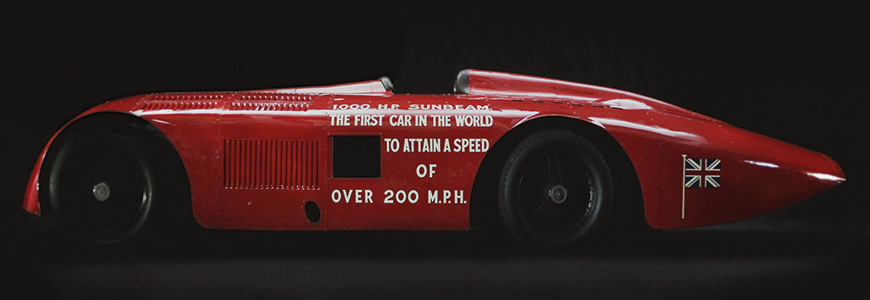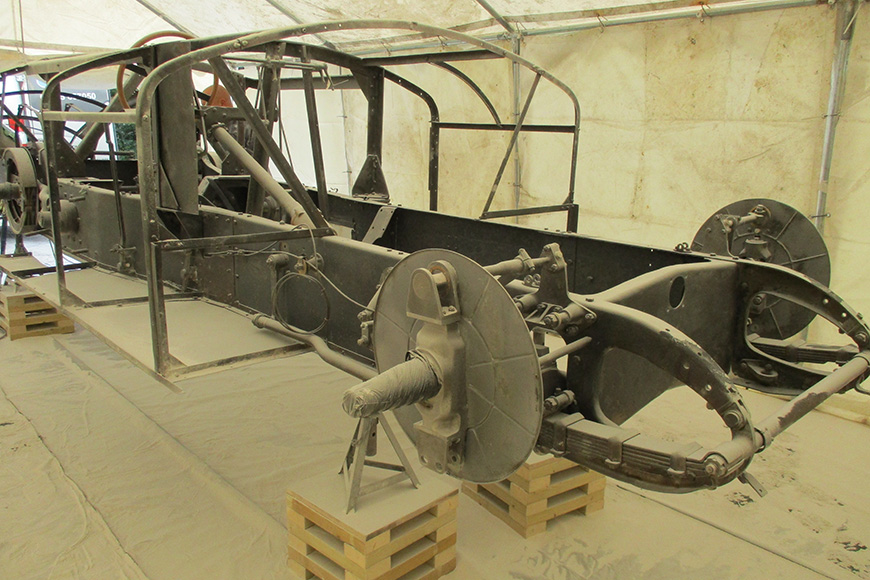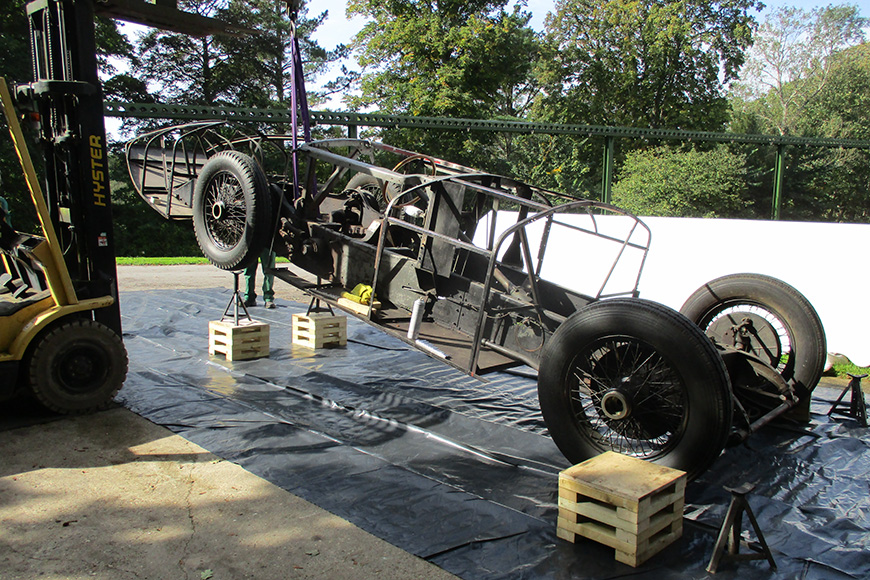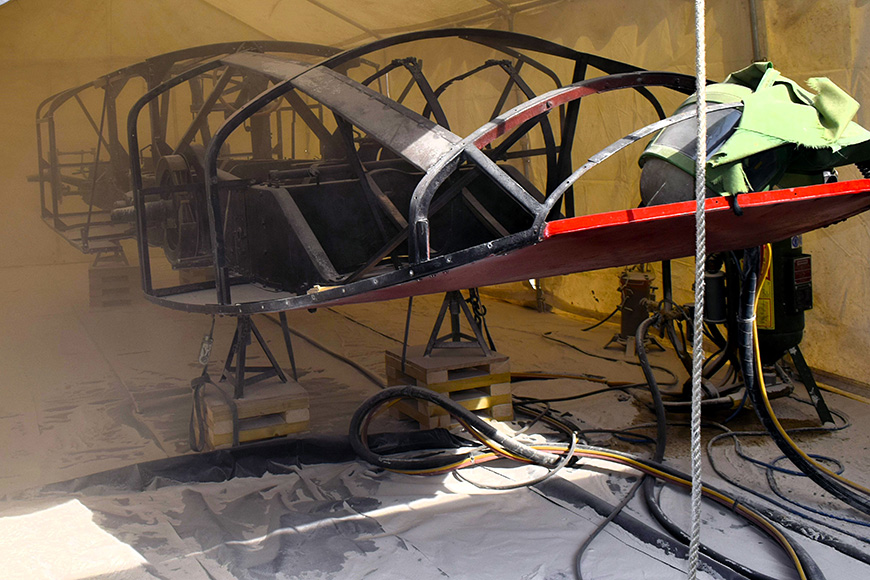
Specialist soda blasting has revealed original mechanics’ markings on Land Speed Record breaker Sunbeam 1000hp as the National Motor Museum carried out the next major stage of its restoration.
The expert technique was chosen as the safest way to remove loose paint, dirt and rust from the historic car’s chassis, before it can be painted to preserve it for another 100 years.

National Motor Museum Manager and Chief Engineer Doug Hill explained: “Soda blasting is not as aggressive as shot blasting and was therefore the best way to remove the worst of the detritus. It exposed original markings, which would have been made at the Sunbeam Works in Wolverhampton in 1927.
“This was one of the biggest tasks for the main structure of the vehicle and the process was successful. Thankfully, it did not expose any areas of concern.”
Doug added: “We are now stress testing various areas before clear coating the chassis with Trimite paint to preserve and encapsulate as much of its history as possible. This work will preserve the car for another 100 years.”
To see soda blasting footage – and the markings it exposed – go to Beaulieu’s YouTube channel.
The Sunbeam 1000hp Restoration Campaign aims to raise £300k to restore ‘The Slug’ with the ambition of taking it back to Daytona Beach in Florida for the 100th anniversary of its record-breaking run in 2027.

A time capsule of original mechanics’ tools and a preserved shilling with a 1921 stamp was found in solidified oil on top of the rear suspension spring, when bodywork was previously taken off to expose the chassis. They had remained hidden in the vehicle since Major Henry Segrave made motoring history by breaking the 200mph barrier.
In the next stage of the restoration, the axles and non-painted metal work will undergo a laser rust removal process. Sunbeam’s colossal rear V12 aero engine will also be reassembled by the National Motor Museum’s experienced team of mechanics.
Visitors can see the exposed chassis on show in the National Motor Museum as part of a visit to Beaulieu. Sunbeam 1000hp can also be seen at various motoring events around the country, with more details to be released.
The Sunbeam 1000hp Restoration Campaign was launched with Hampshire-based Brookspeed Automotive in March. To help raise the profile of the vehicle’s centenary celebrations and fundraising campaign – through individual donations and corporate sponsorship – there are plans to take it to Europe and on tour to motoring museums across America. Opportunities will also be offered for schools, colleges and universities to get involved with STEM workshops and activities.

The Sunbeam’s two 22.5 litre engines, which each produced 435bhp, have not run since before World War II more than 80 years ago – after corrosion attacked internal workings. With painstaking rebuilding, using specialist knowledge and bespoke parts, National Motor Museum engineers will recapture the sounds, sights and smells of this ground-breaking machine and help to preserve it for future generations.
Designed and built solely to break the 200mph barrier, this immensely powerful machine was once the fastest car in the world. For footage of the Sunbeam’s record-breaking runs, go to Beaulieu’s YouTube channel.
Funds are now needed to turn back the clock and complete the full restoration project. Donations for the Sunbeam 1000hp Restoration Campaign can be made online here. Sponsors and corporate donors who would like to be associated with the campaign are urged to get in touch by emailing michelle.kirwan@beaulieu.co.uk.
